| GeM Sahay 2.0 | The GeM will launch a revamped mobile-based lending platform, GeM Sahay 2.0.
GeM-SAHAY app: It was launched in 2021 to address the credit availability challenges faced by sole proprietors on GeM. GeM’s ‘Start-up Runway’ Initiative: It gives start-ups direct visibility with the buyers of the public procurement portal. About GeM Portal: GeM was launched in 2016 as a government-to-business platform.
|
| State Development Loan (SDL) Bonds | State governments raised ₹50,206 crore via the auction of State Development Loan (SDL) bonds.
About State Development Loans (SDL):
|
| Exchange-traded Funds (ETFs) | There is increasing attention towards artificial intelligence (AI)-themed ETFs.
ETF: An ETF is a basket of securities that trades on an exchange just like a stock does.
Types of ETFs: Index-Based ETFs: These ETFs seek to track a securities index like the S&P 500 stock index and generally invest primarily in the index’s component securities. Actively Managed ETFs: Actively managed ETFs are not based on an index. Instead, they seek to achieve a stated investment objective by investing in a portfolio of stocks, bonds, and other assets. |
| Gaia AI Project | Central bankers use artificial intelligence to collect data to assess climate-related financial risks.
Gaia AI Project: It analysed company disclosures on carbon emissions, green bond issuance and voluntary net-zero commitments.
|
| Artificial Intelligence or AI tokens | There is a surge in AI tokens amid growing demand for Machine Learning applications.
AI tokens: These refers to cryptocurrencies that are specifically developed to fuel AI-based projects, applications, and services.
Some Examples of AI Tokens: Scotty the AI, eTukTuk, Nosana, and Artificial Liquid Intelligence – An ecosystem built to enhance AI ownership. Cryptocurrency: It is a digital form of currency secured by Blockchain Technology that operates decentralised, free from government or institutional control. Ex- Bitcoin, Ethereum, and Litecoin. |
| Must Read | |
| NCERT Notes For UPSC | UPSC Daily Current Affairs |
| UPSC Blogs | UPSC Daily Editorials |
| Daily Current Affairs Quiz | Daily Main Answer Writing |
| UPSC Mains Previous Year Papers | UPSC Test Series 2024 |

Recently, the United States’ Environmental Protection Agency (EPA) announced a comprehensive ban on all forms of the deadly carcinogen asbestos.
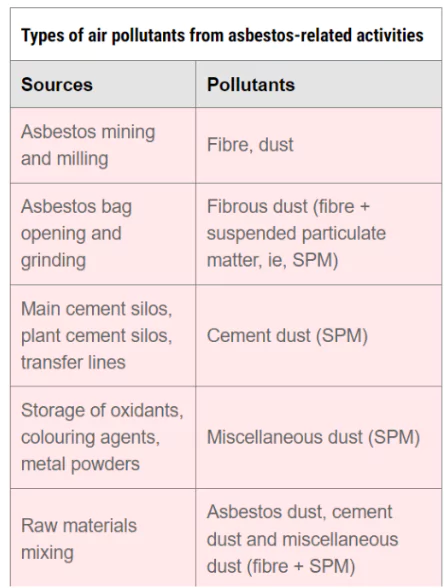
Ban of Asbestos in Developed Countries:
|
|---|
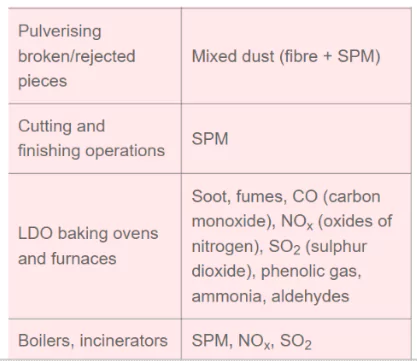 Uses and Applications:
Uses and Applications:
| Must Read | |
| NCERT Notes For UPSC | UPSC Daily Current Affairs |
| UPSC Blogs | UPSC Daily Editorials |
| Daily Current Affairs Quiz | Daily Main Answer Writing |
| UPSC Mains Previous Year Papers | UPSC Test Series 2024 |
Bihar’s only tiger reserve Valmiki Tiger Reserve (VTR) uses green energy to provide water to wild animals during the hot summer.
| Must Read | |
| NCERT Notes For UPSC | UPSC Daily Current Affairs |
| UPSC Blogs | UPSC Daily Editorials |
| Daily Current Affairs Quiz | Daily Main Answer Writing |
| UPSC Mains Previous Year Papers | UPSC Test Series 2024 |
A performance audit conducted by the Comptroller and Auditor General of India (CAG) on the degradation of the Shipra River, threw up a host of significant findings.
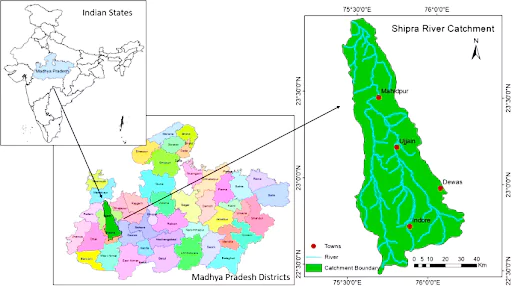
| Must Read | |
| NCERT Notes For UPSC | UPSC Daily Current Affairs |
| UPSC Blogs | UPSC Daily Editorials |
| Daily Current Affairs Quiz | Daily Main Answer Writing |
| UPSC Mains Previous Year Papers | UPSC Test Series 2024 |
A recent World Bank Group report found that women receive only 77 cents for every $1 paid to males, underscoring the gender pay disparity.
| Labour Force Participation Rate | Men | Women |
| Global | 72% | 47% |
| India | 53.26% | 25.51% |
| Must Read | |
| NCERT Notes For UPSC | UPSC Daily Current Affairs |
| UPSC Blogs | UPSC Daily Editorials |
| Daily Current Affairs Quiz | Daily Main Answer Writing |
| UPSC Mains Previous Year Papers | UPSC Test Series 2024 |
The scientists have proposed a classification system for metastatic cancers, placing the molecular characteristics of the cancer over the tissue of origin.
Metastasis: In this, cancer cells break away from the original (primary) tumor, travel through the blood or lymph system, and form a new tumour in other organs or tissues of the body.
|
|---|
| Must Read | |
| NCERT Notes For UPSC | UPSC Daily Current Affairs |
| UPSC Blogs | UPSC Daily Editorials |
| Daily Current Affairs Quiz | Daily Main Answer Writing |
| UPSC Mains Previous Year Papers | UPSC Test Series 2024 |
Pandavula Gutta was recently officially recognised as Telangana’s sole geo-heritage site.

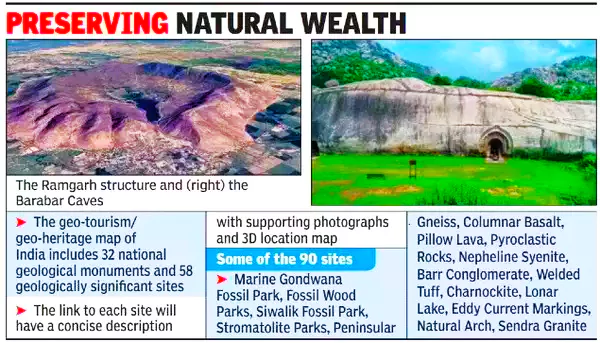 Location: Ramgarh Village, Mangrol Tehsil, Baran district, Rajasthan
Location: Ramgarh Village, Mangrol Tehsil, Baran district, Rajasthan
Geological Survey of India (GSI)
|
|---|
| Must Read | |
| NCERT Notes For UPSC | UPSC Daily Current Affairs |
| UPSC Blogs | UPSC Daily Editorials |
| Daily Current Affairs Quiz | Daily Main Answer Writing |
| UPSC Mains Previous Year Papers | UPSC Test Series 2024 |
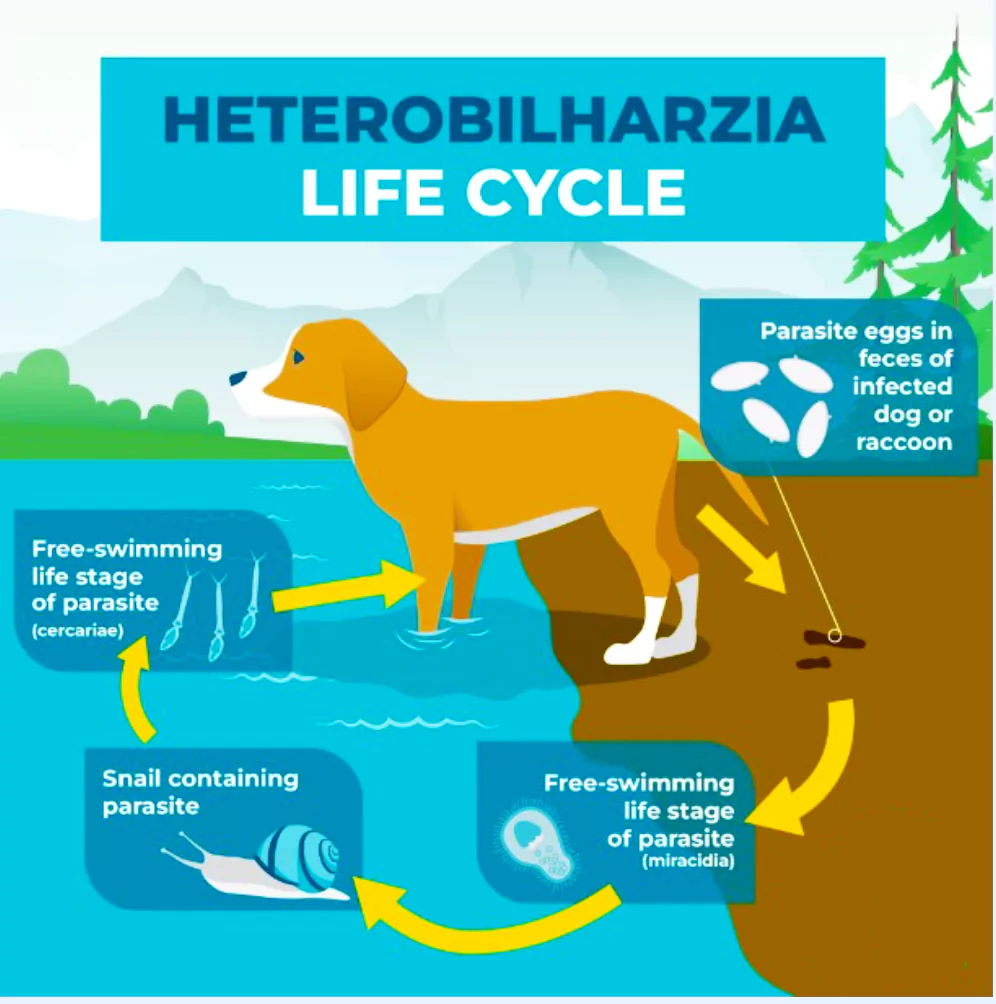
New study confirms discovery of Dog-killing Flatworms Parasite (Heterobilharzia Americana) in Southern California’s Colorado river.
| Must Read | |
| NCERT Notes For UPSC | UPSC Daily Current Affairs |
| UPSC Blogs | UPSC Daily Editorials |
| Daily Current Affairs Quiz | Daily Main Answer Writing |
| UPSC Mains Previous Year Papers | UPSC Test Series 2024 |
According to a report by a European team, Chemicals in plastics are far more numerous than previous estimates.
About Plastic Pollution
|
|---|
| Must Read | |
| NCERT Notes For UPSC | UPSC Daily Current Affairs |
| UPSC Blogs | UPSC Daily Editorials |
| Daily Current Affairs Quiz | Daily Main Answer Writing |
| UPSC Mains Previous Year Papers | UPSC Test Series 2024 |
Indian States have been gradually registering a withdrawal of spring season — a period of relatively benign weather between the winter of January and the scorching summers of April.
About Western Disturbances
|
|---|
| Must Read | |
| NCERT Notes For UPSC | UPSC Daily Current Affairs |
| UPSC Blogs | UPSC Daily Editorials |
| Daily Current Affairs Quiz | Daily Main Answer Writing |
| UPSC Mains Previous Year Papers | UPSC Test Series 2024 |
The recent visit of the Bhutanese Prime Minister to India, followed by the announcements of the visit of the Indian Prime Minister to Bhutan, exemplifies India’s commitment to neighbourhood first policy.
| Relevancy for Prelims: Neighbourhood First Policy, India Bhutan Relations, Indian Diplomacy, and India’s Foreign Policy.
Relevancy for Mains: India’s Neighbourhood First Policy: Evolution, Significance, Challenges, and Way Forward. |
|---|
About India Bhutan Relationship
|
|---|
India’s Neighbourhood First Policy (NFP) dynamically adapts to the region’s evolving landscape, highlighting India’s commitment to shaping a prosperous South Asian future. This strategic approach is vital for fostering a stable and affluent neighbourhood that aligns with India’s national and foreign policy goals.
| Mains Question: Define Realpolitik and its core principles in international relations. Examine instances in India’s foreign policy where Realpolitik principles were evident. (15 marks, 250 words) |
|---|
| Must Read | |
| NCERT Notes For UPSC | UPSC Daily Current Affairs |
| UPSC Blogs | UPSC Daily Editorials |
| Daily Current Affairs Quiz | Daily Main Answer Writing |
| UPSC Mains Previous Year Papers | UPSC Test Series 2024 |
Recently, the World Meteorological Organization (WMO) released the State of Global Climate Report 2023 (an annual State of the Climate Report).
| Relevancy for Prelims: State of Global Climate Report 2023: World Meteorological Organization Report, Climate Change, Climate Change Organizations, Rising Earth Temperature, and UN Climate Summit 2023 or COP28.
Relevancy for Mains: Gig Economy in India: Current Status, Classification, Benefits, and Regulatory Frameworks. |
|---|
About the World Meteorological Organization (WMO)
|
|---|
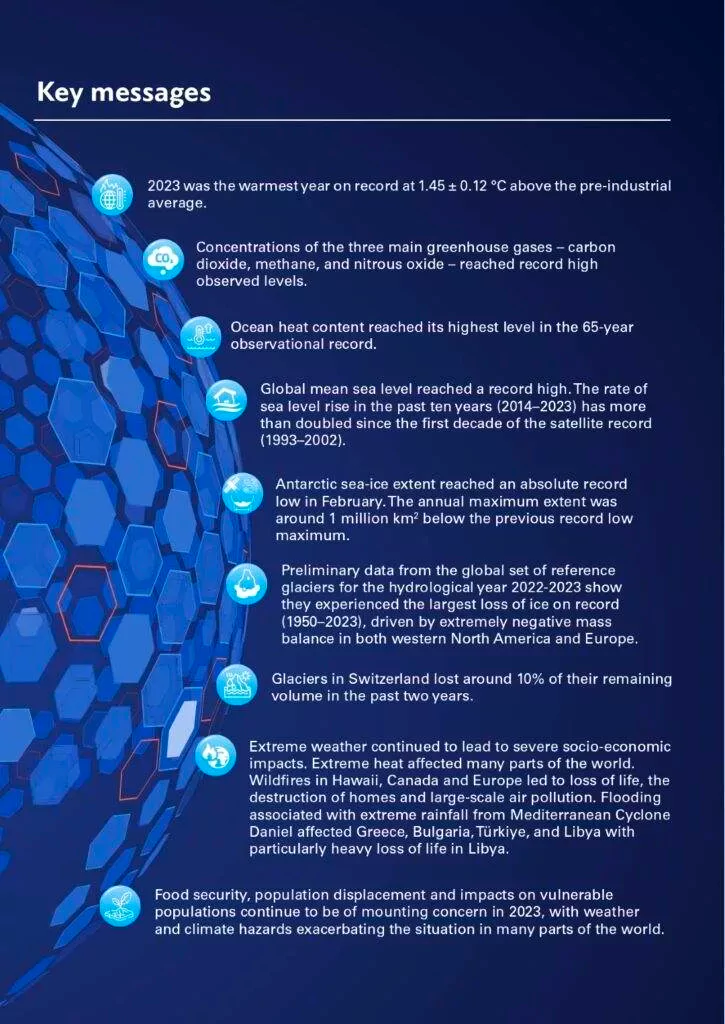
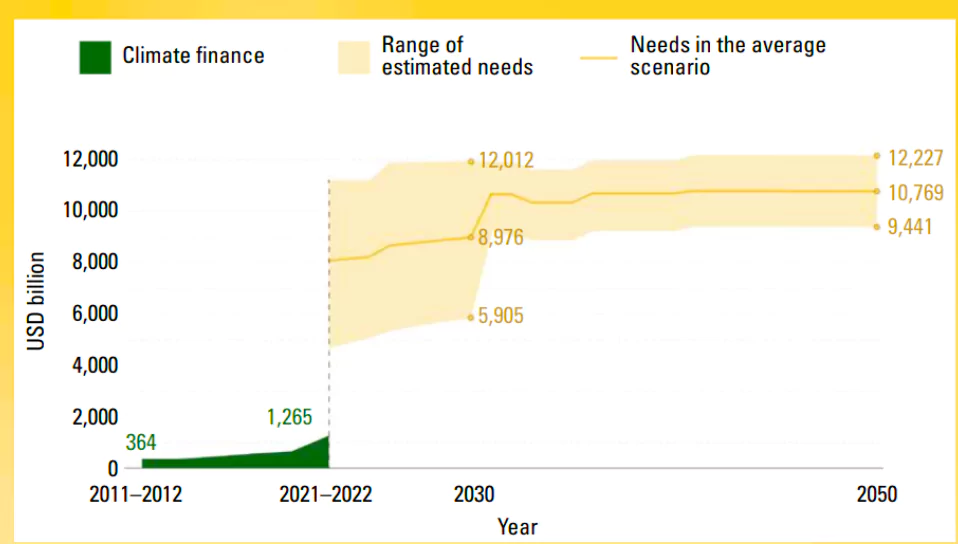 In an average scenario for a 1.5°C pathway, annual climate finance investments need to grow more than six times, reaching almost USD 9 trillion by 2030 and a further USD 10 trillion through 2050.
In an average scenario for a 1.5°C pathway, annual climate finance investments need to grow more than six times, reaching almost USD 9 trillion by 2030 and a further USD 10 trillion through 2050.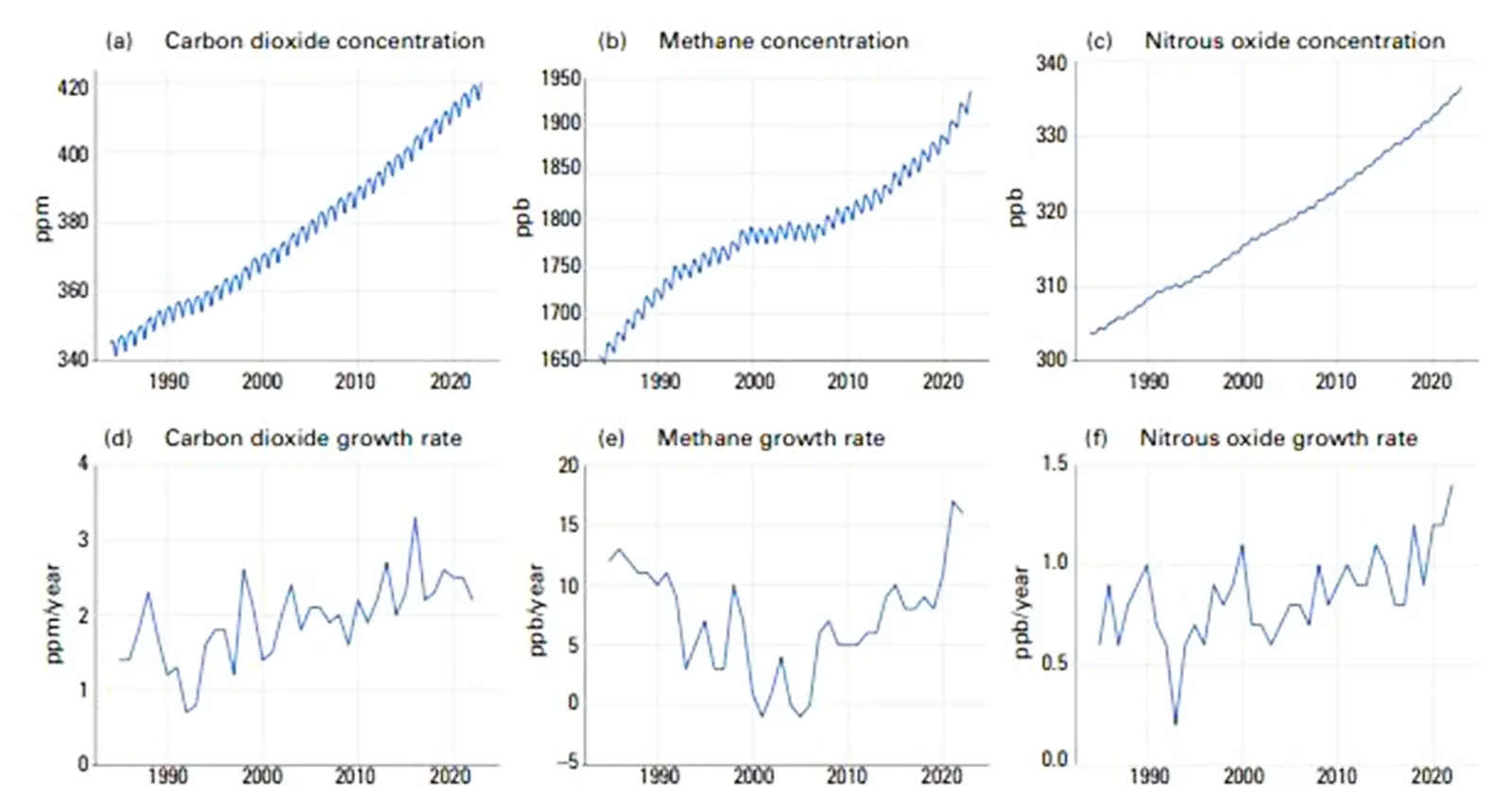
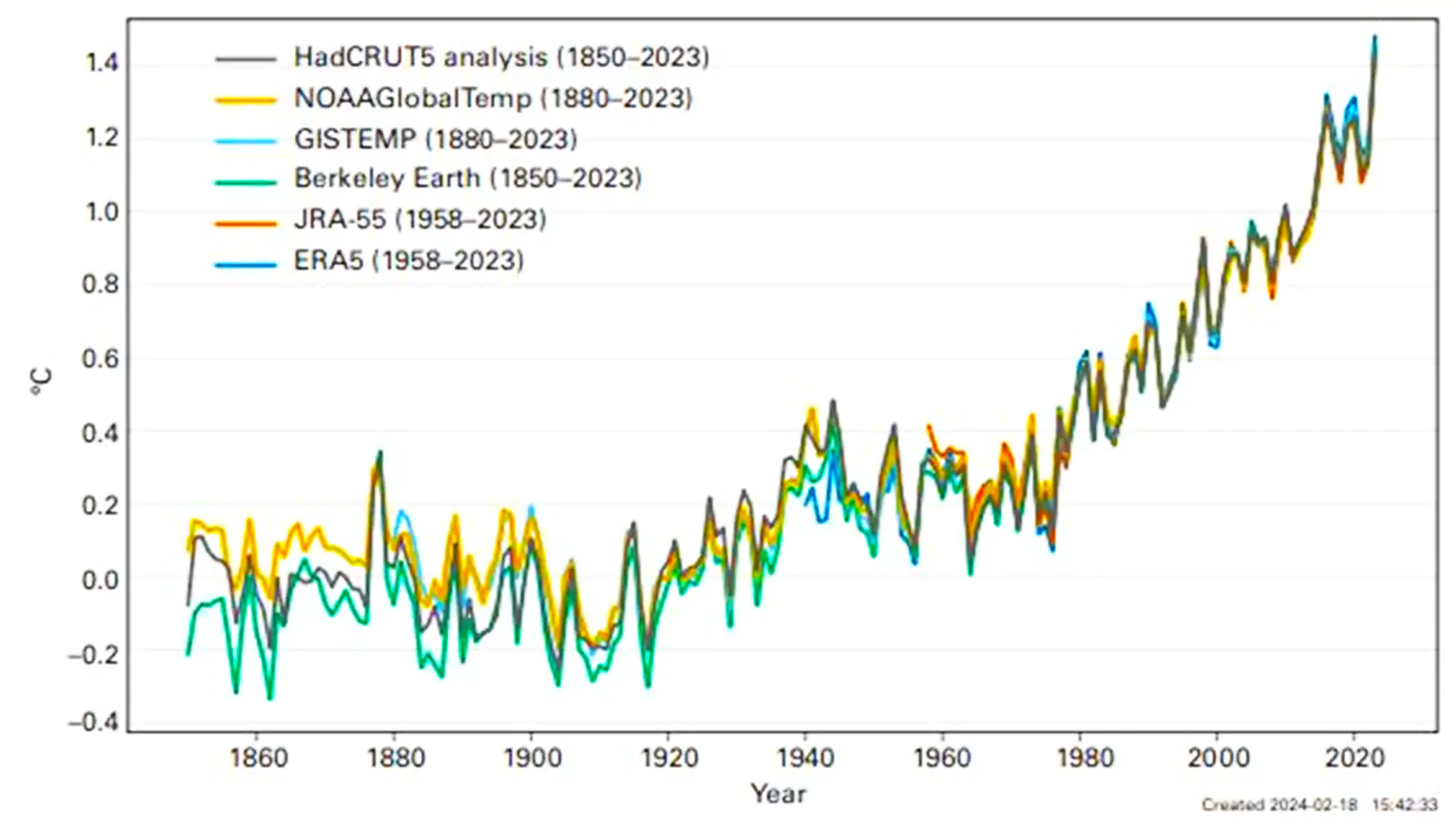
|
|---|
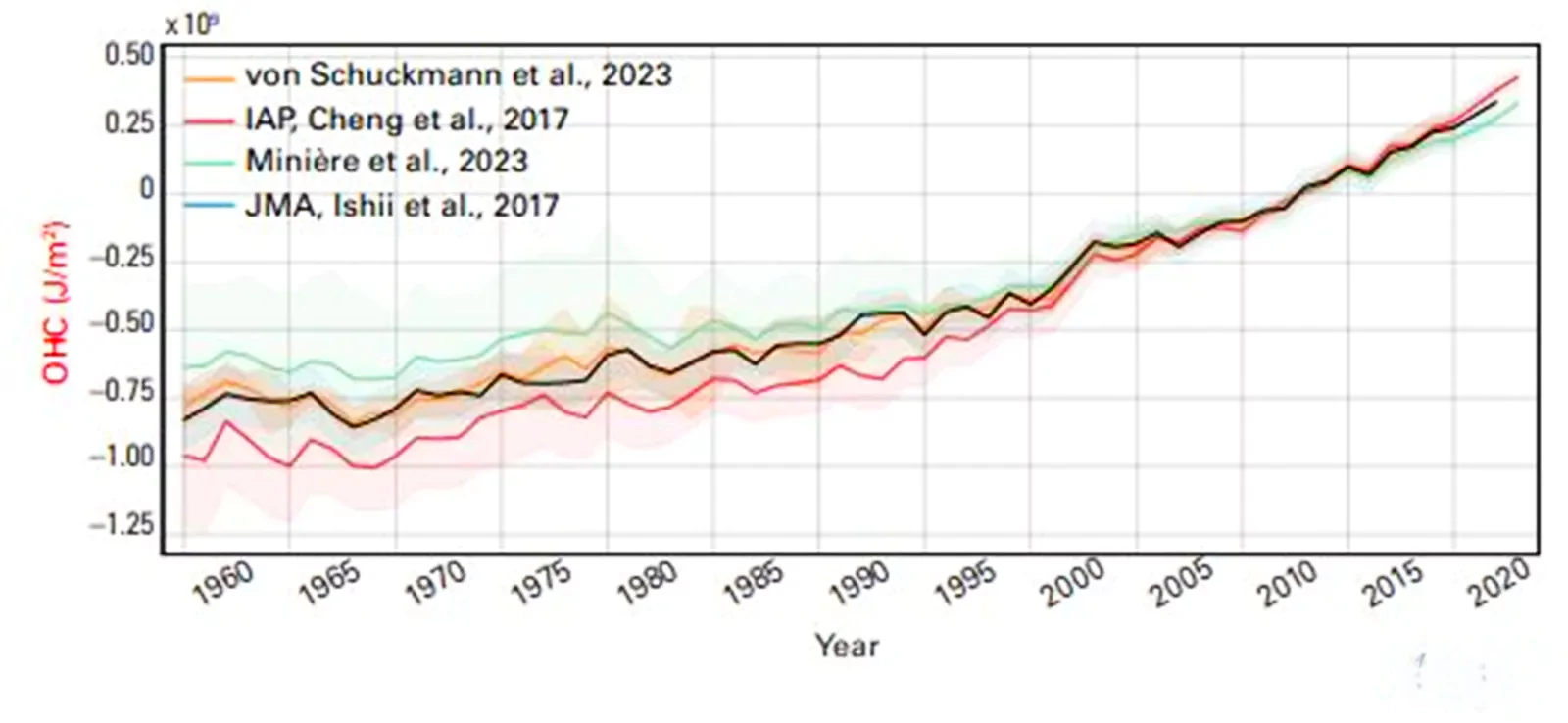
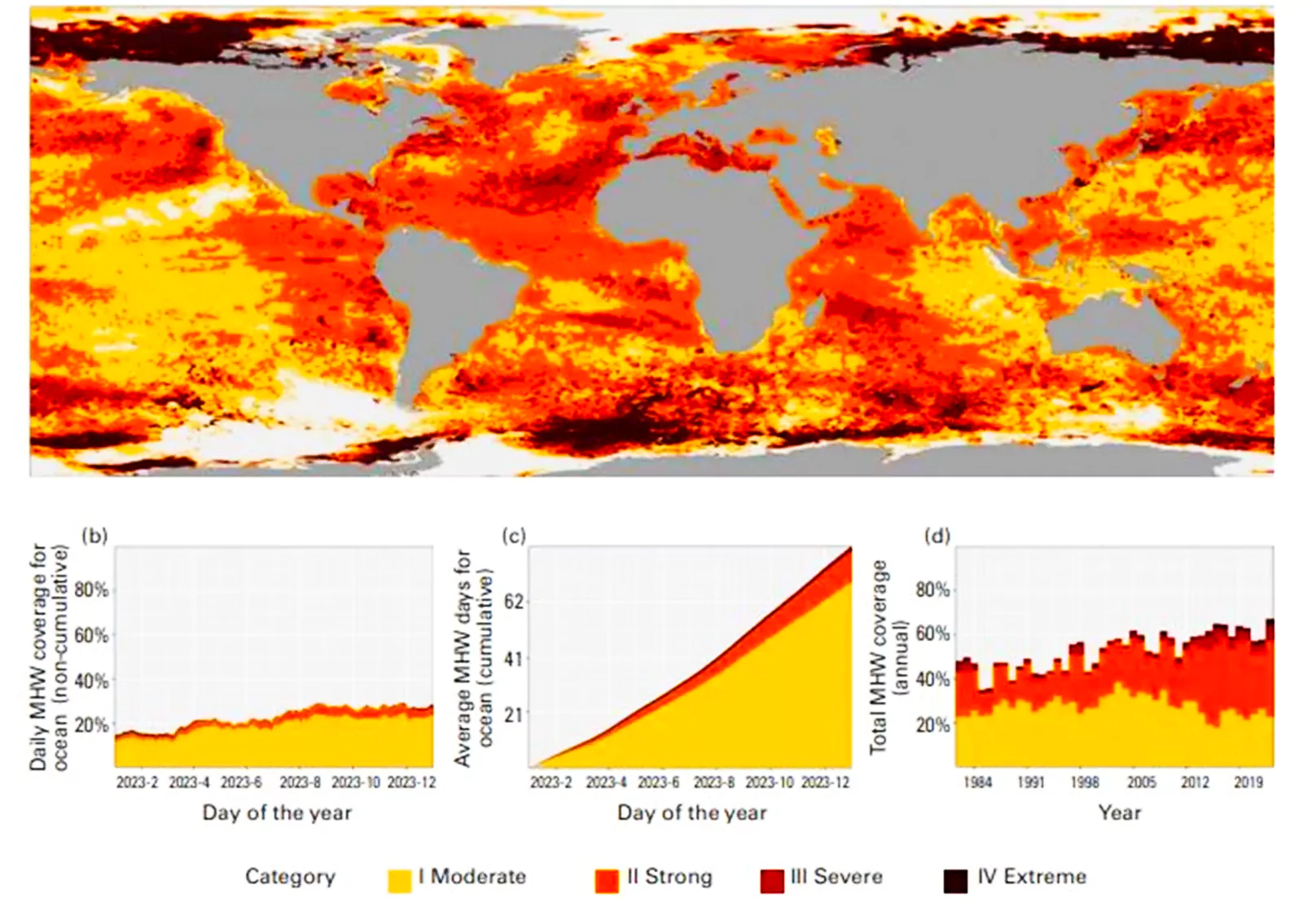
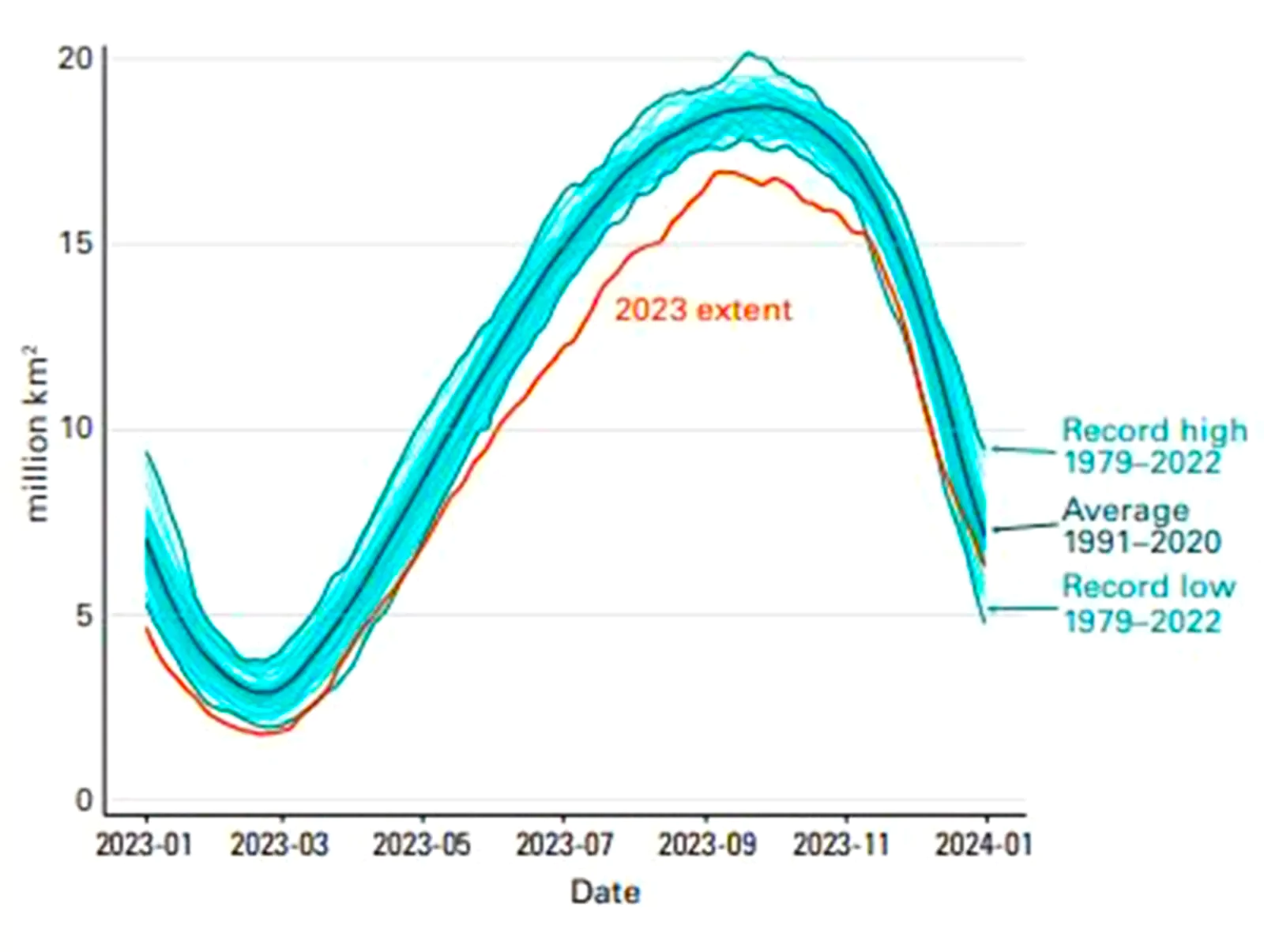
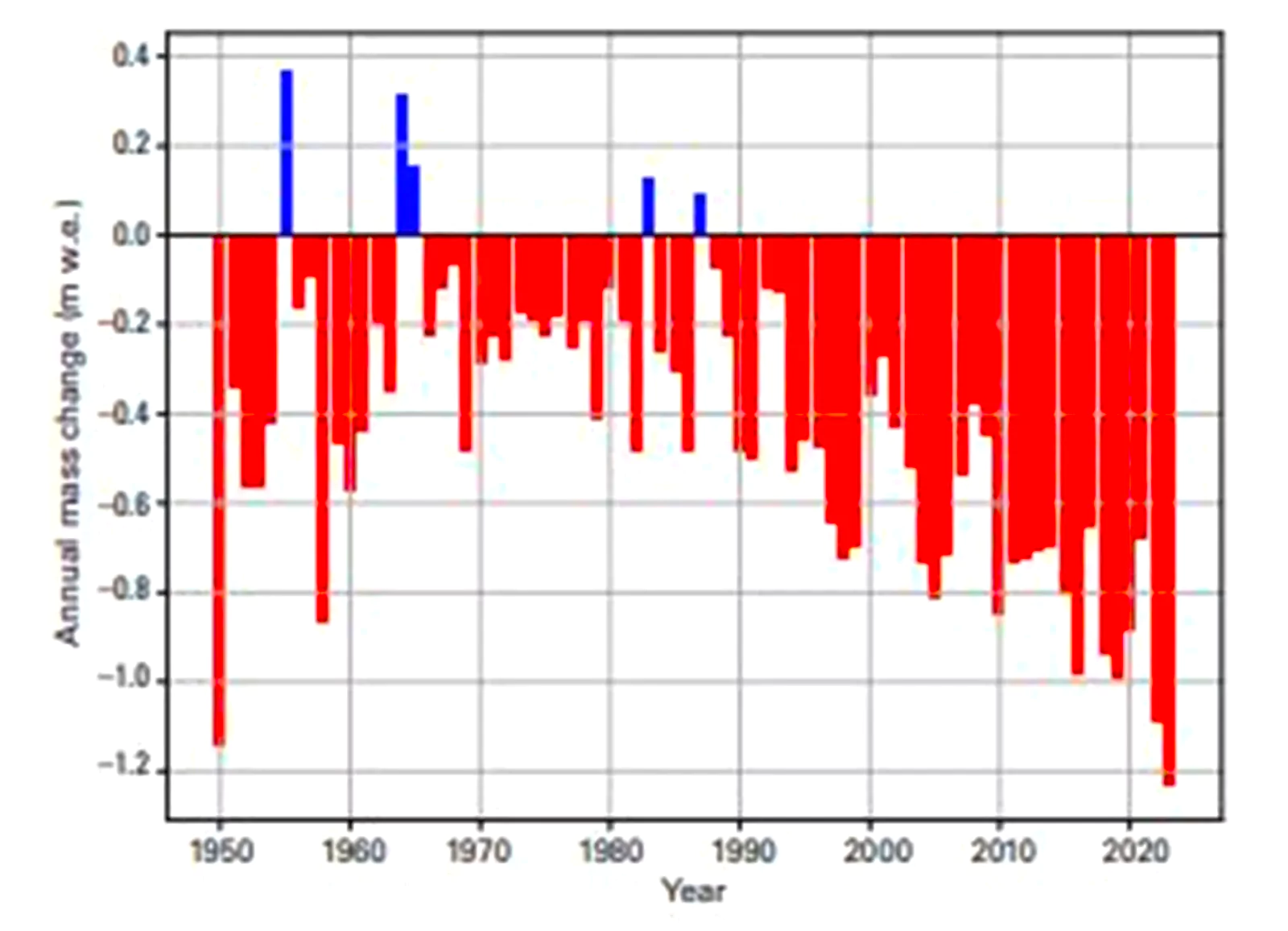
Crisis of Displacement in 2023
|
|---|
About Nationally Determined Contributions (NDCs)
About National Meteorological and Hydrological Services (NMHS)
|
|---|
The Earth is experiencing unprecedented changes that are leading to more frequent and intense extreme weather events, food insecurity, and displacement of vulnerable populations. To mitigate the impacts of climate change and adapt to the new reality, it is crucial to scale up climate finance and close the financing gap.
| Prelims PYQ (2023):
Consider the following statements: Statement-I: Carbon markets are likely to be one of the most widespread tools in the fight against climate change. Statement-II: Carbon markets transfer resources from the private sector to the State. Which one of the following is correct in respect of the above statements? (a) Both Statement-I and Statement-II are correct and StatementII is the correct explanation for Statement-I (b) Both Statement-I and Statement-II are correct and StatementII is not the correct explanation for Statement-I (c) Statement-I is correct but StatementII is incorrect (d) Statement-I is incorrect but Statement-II is correct. Ans: (a) |
|---|
| Must Read | |
| NCERT Notes For UPSC | UPSC Daily Current Affairs |
| UPSC Blogs | UPSC Daily Editorials |
| Daily Current Affairs Quiz | Daily Main Answer Writing |
| UPSC Mains Previous Year Papers | UPSC Test Series 2024 |
SC Verdict on Newsclick Shows Adherence to Due Pro...
Stay Invested: On Chabahar and India-Iran Relation...
Credit Rating Agencies, Impact on India’s De...
Catapulting Indian Biopharma Industry
Globalisation Under Threat, US Import Tariffs Have...
Global Report on Hypertension, Global Insights and...
<div class="new-fform">
</div>
